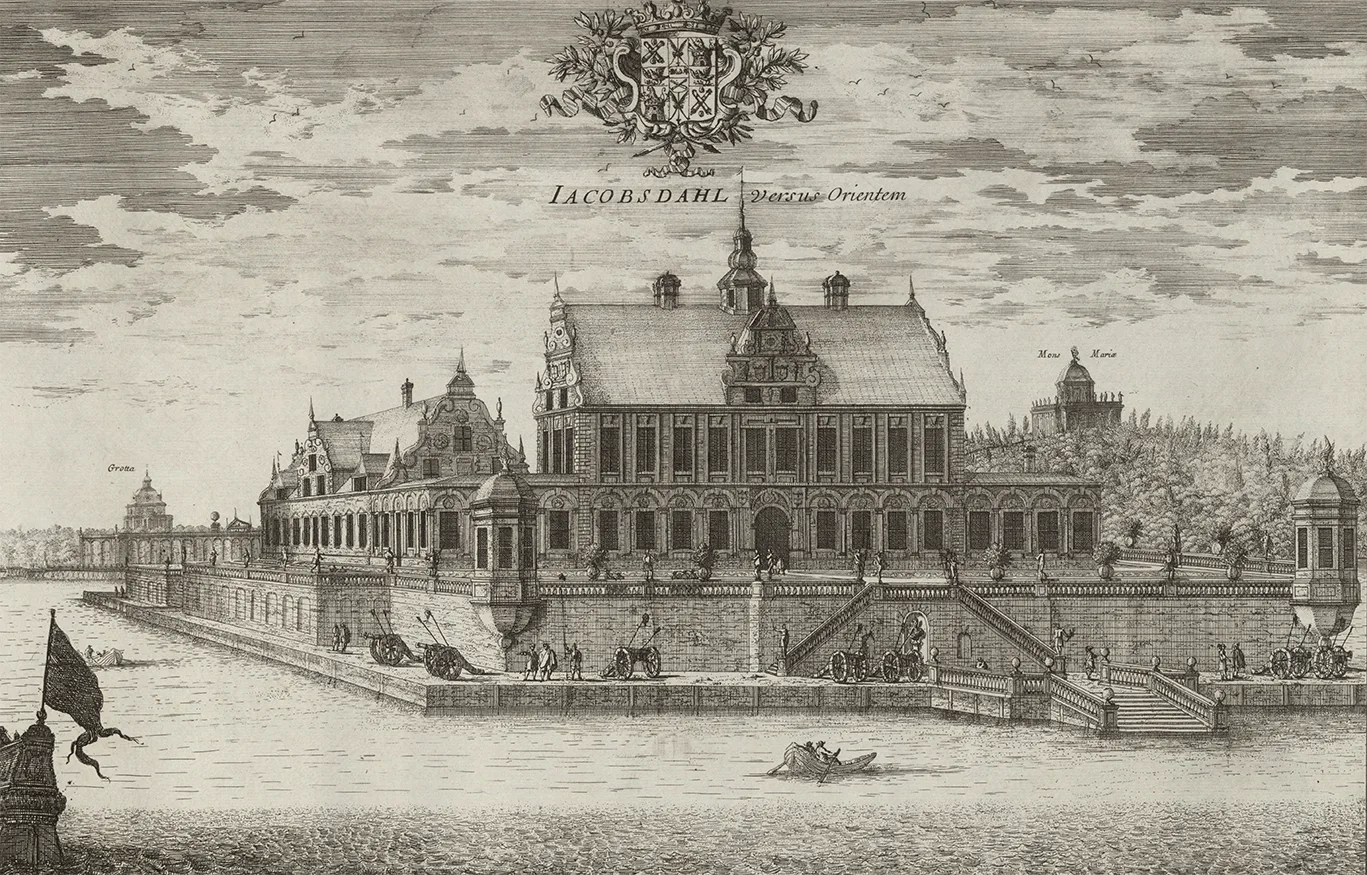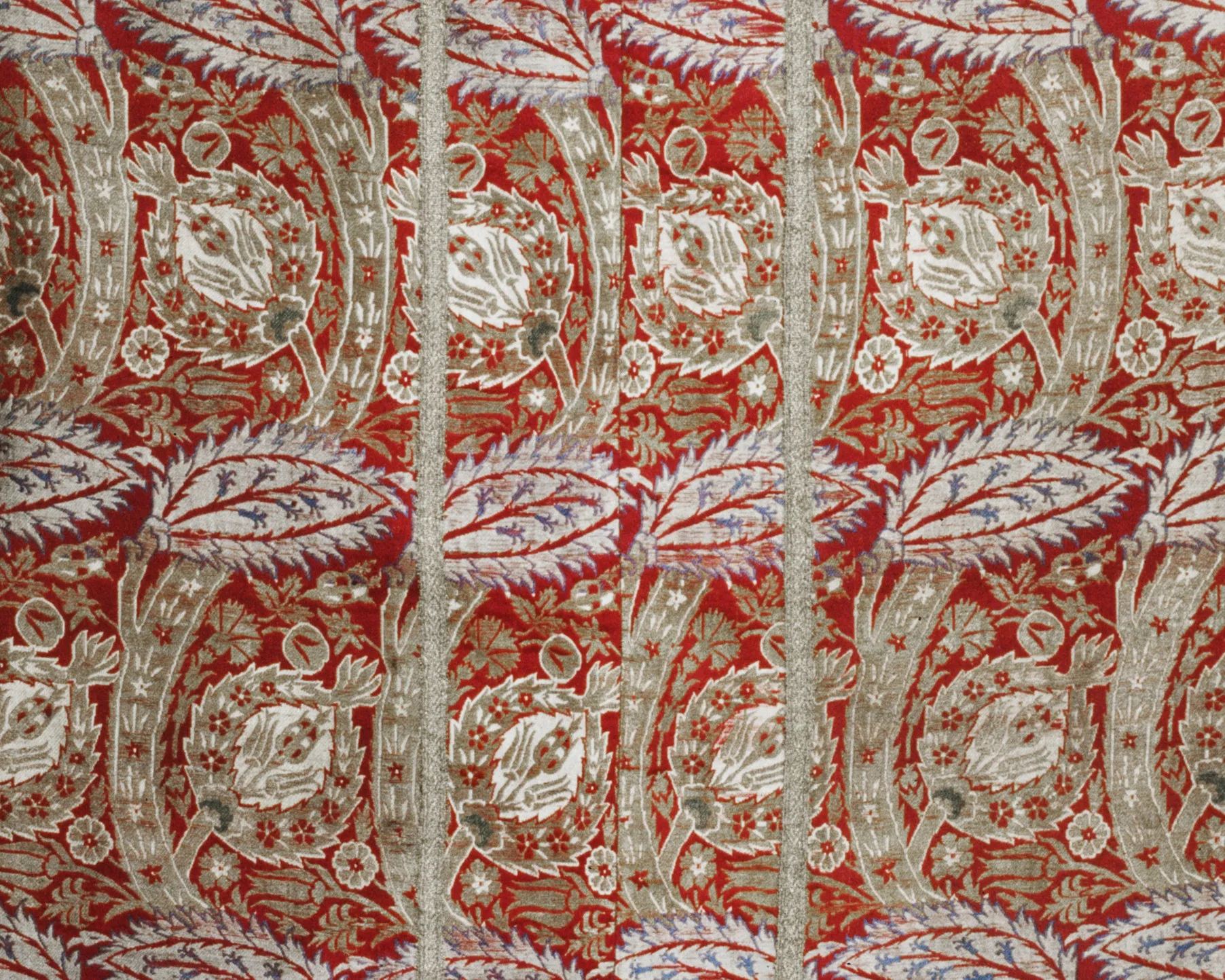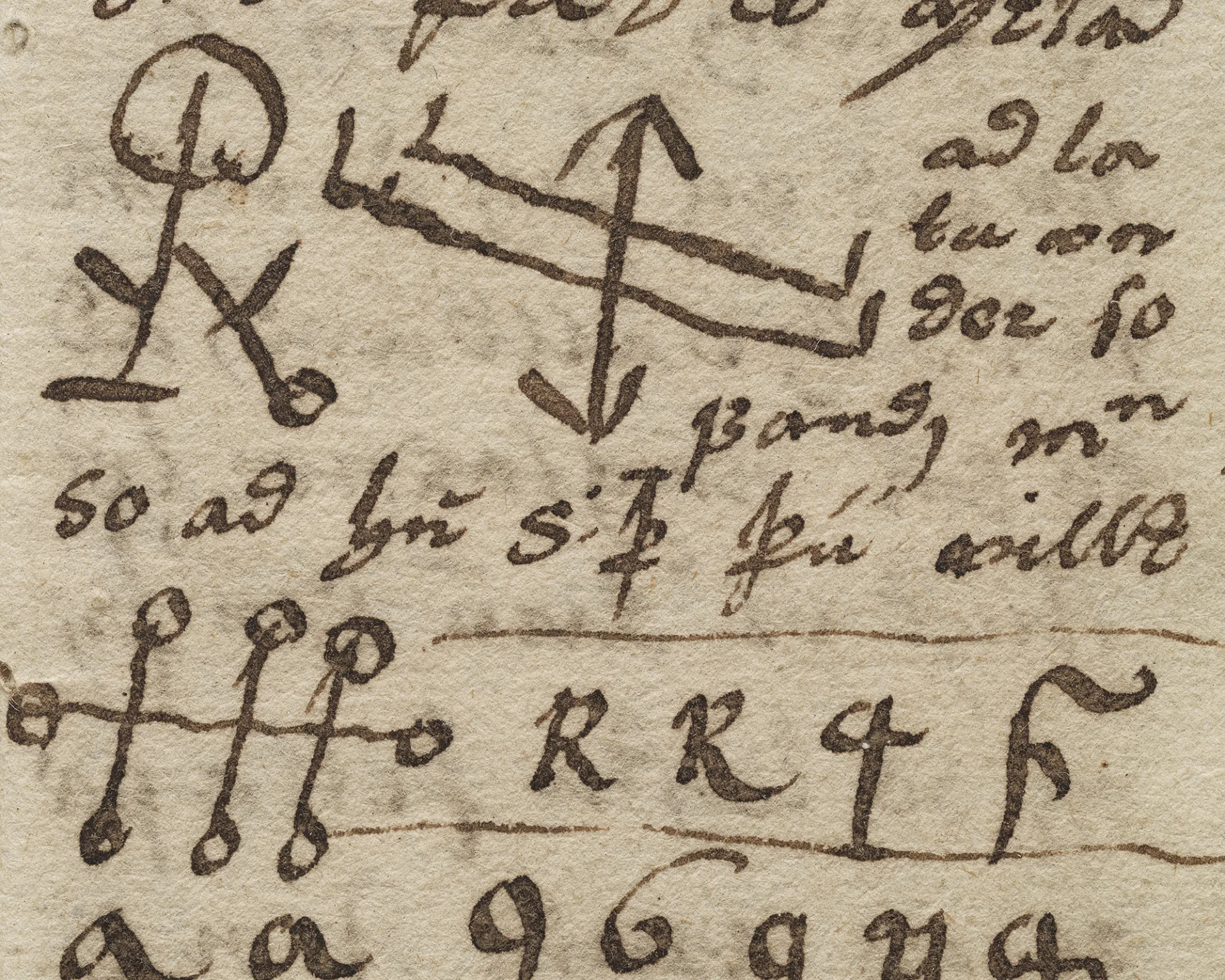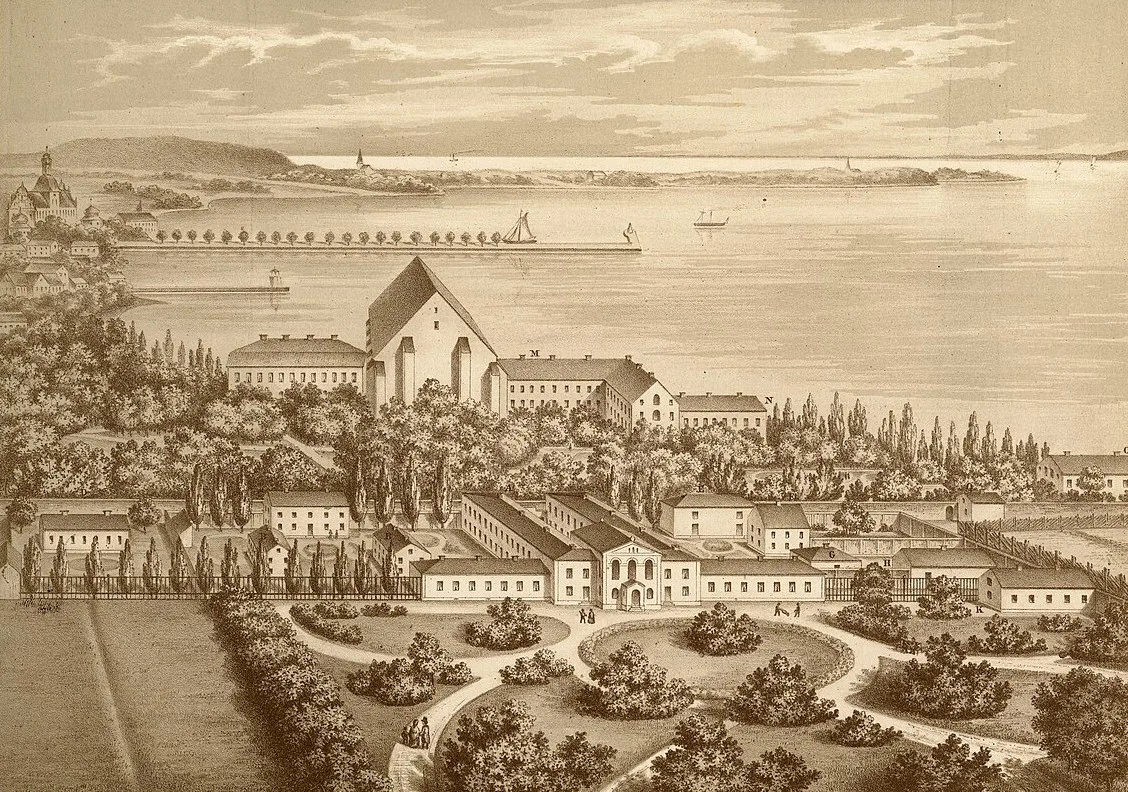A green and a black antependium
Viking Age
AD 800 – AD 1100
Middle Ages
AD 1050 – AD 1520
Modern Age
AD 1520 – AD 2025
An antependium is a textile hanging that covers the front of the altar, and sometimes its sides as well. It occupies a central position in the church interior and is prominently visible when one walks down the aisle towards the altar.
The designer Gisberg
Ösmo Church’s green antependium was produced in 1911 at the Licium textile studio, based on a design by the artist Sofia Gisberg. In addition to creating designs for both sacred and secular textiles, Gisberg also taught textile drawing and lettering at the Technical School, now known as Konstfack, the University of Arts, Crafts and Design in Stockholm.

For the Ösmo antependium, Gisberg drew inspiration from the 19th-century English Arts and Crafts movement, incorporating elements such as the pomegranate and lace oval motifs from medieval and Renaissance design. At the same time, the upper border includes touches of Art Nouveau, a style that was highly fashionable around the turn of the 20th century. The background is a blue-green wool fabric, with motifs predominantly in shades of yellow, accompanied by brown and green.
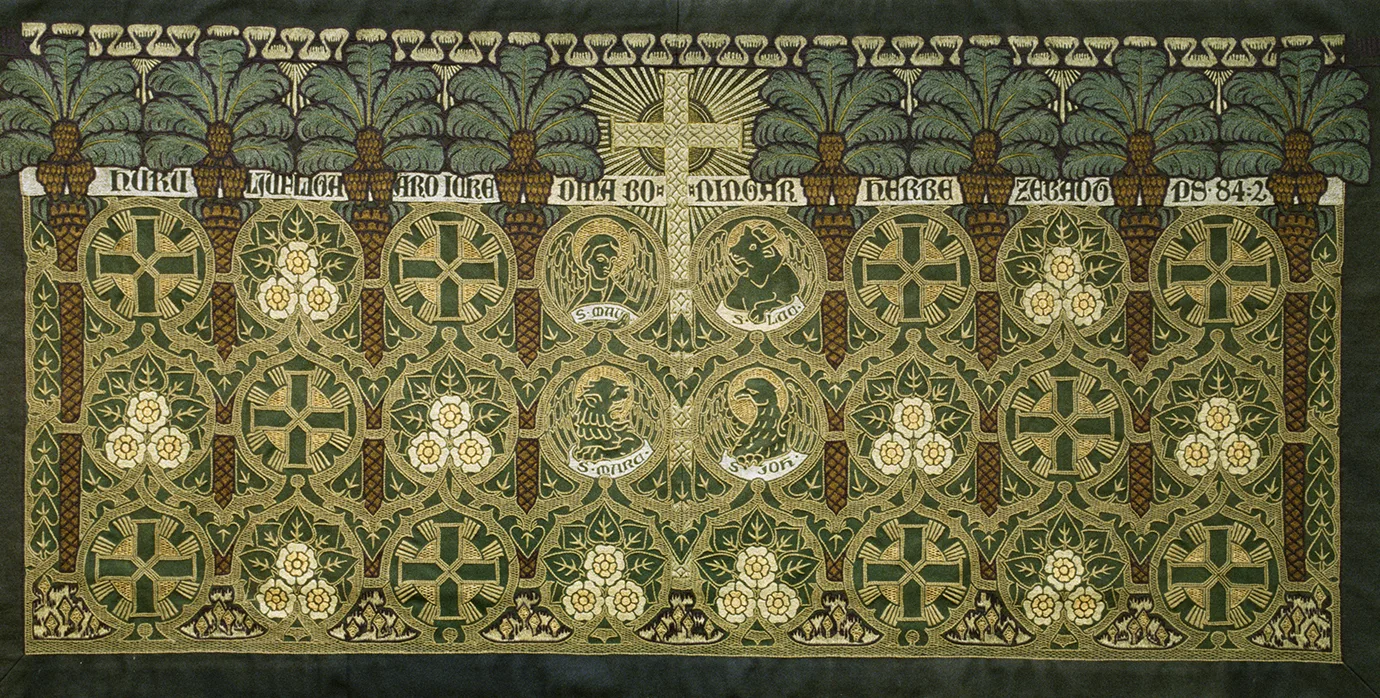
At the centre of the antependium is a radiant cross, flanked by the symbols of the four Evangelists, Matthew, Mark, Luke and John, each set within a circle at the foot of the cross.
On either side of the central section are four boldly drawn palm trees with clusters of dates. Above the tree crowns runs a band of clouds. Between the trunks are three medallion shapes, containing either equal-armed radiant crosses or three roses with leaves. Together with the Evangelist symbols, these form a repeating pattern across two-thirds of the antependium’s surface.
Behind and between the palm trees runs a text band bearing the verse: “How lovely are Thy dwellings, O Lord of Hosts.” (Psalm 84:2)
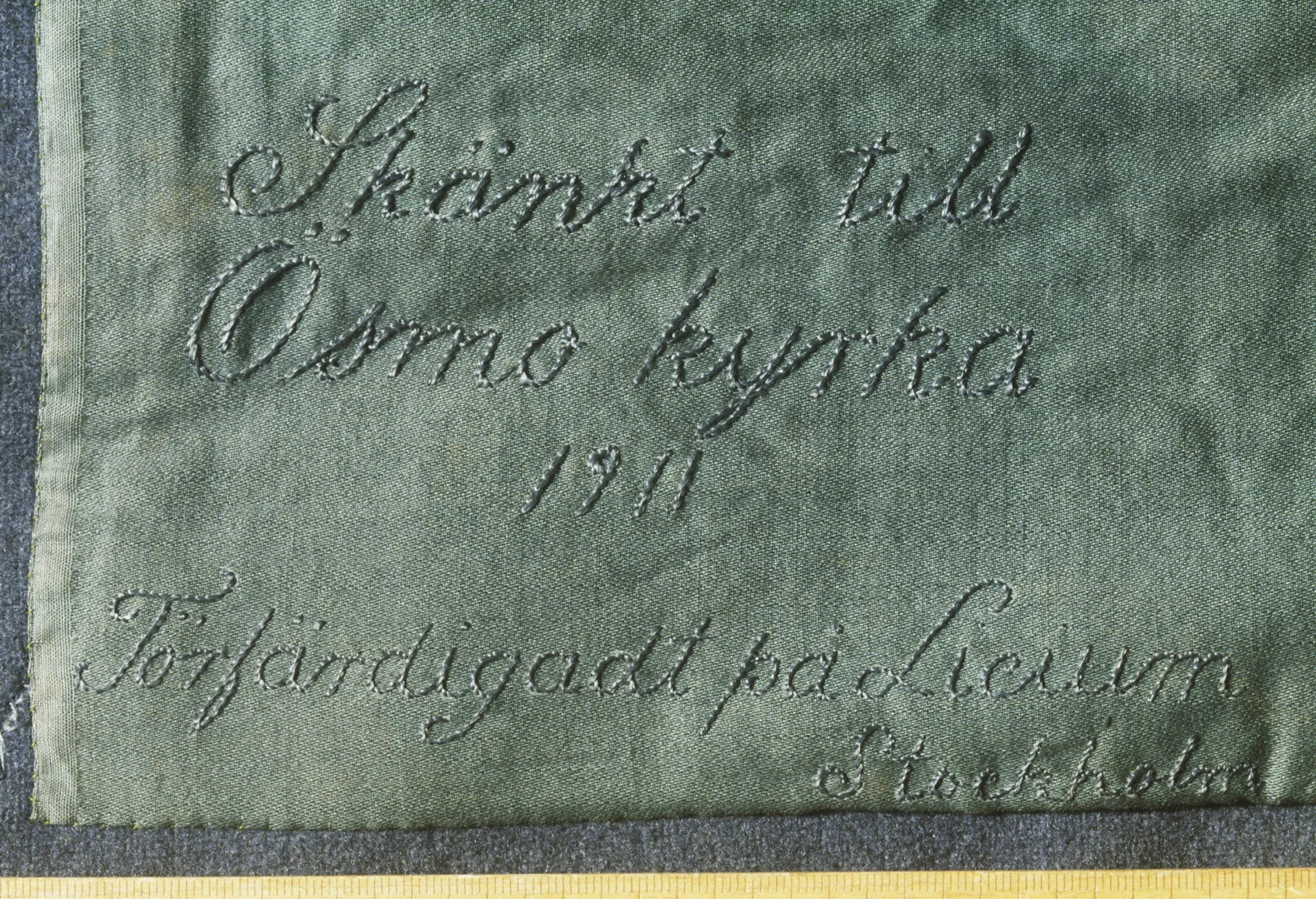
Antependium from Ösmo
Dedikation
A black antependium
The black antependium from Ösmo Church was made at Licium in 1923. The design was likely created by Oscar Brandtberg, an artist and senior lecturer at the Royal Institute of Technology.
This antependium is minimally decorated, yet the black silk itself is patterned. The design resembles luxurious medieval fabrics woven with medallion motifs. Black ecclesiastical textiles are used only on Good Friday or at funerals. The black colour is intended to evoke mourning and loss in the minds of the congregation.
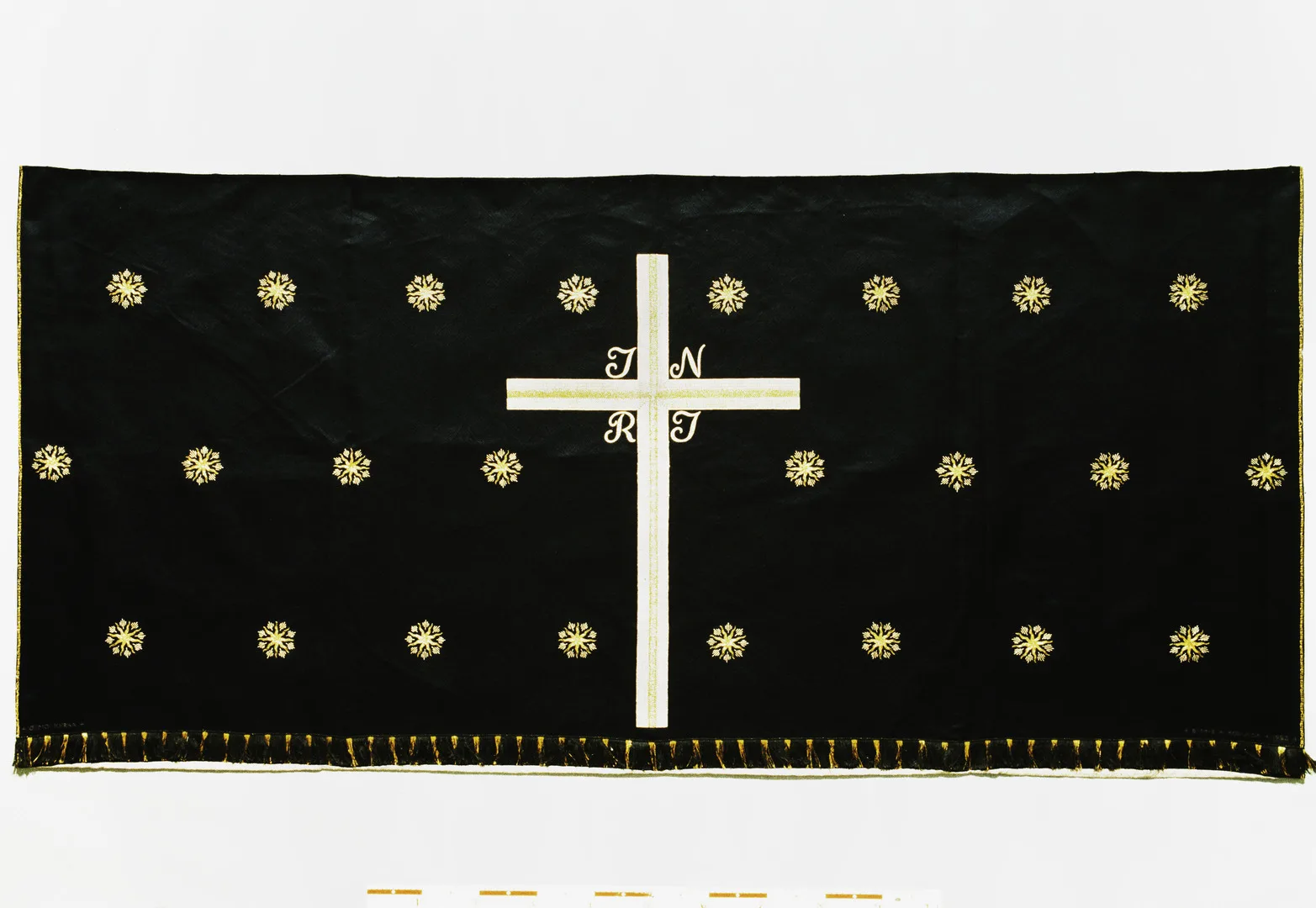
Antependium
The decoration consists mainly of a large cross with the initials INRI positioned at the angles of the cross. These initials stand for Jesus of Nazareth, King of the Jews. On either side of the cross are twelve shimmering stars, twenty-four in total. The lower fringe alternates in black and gold.
Both antependia were deposited at the Swedish History Museum in 1988. Toward the end of the 20th century, many parishes chose to modernise or streamline their collections of liturgical textiles. For preservation purposes, older church textiles were either donated or placed in museum care.


